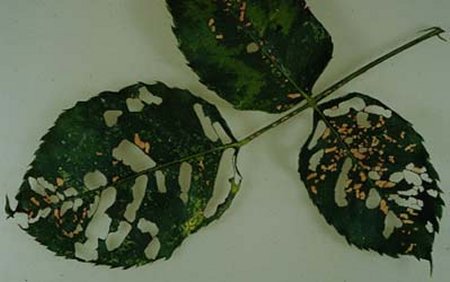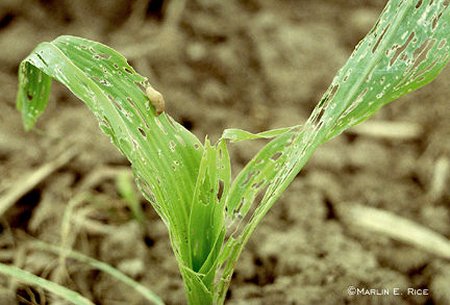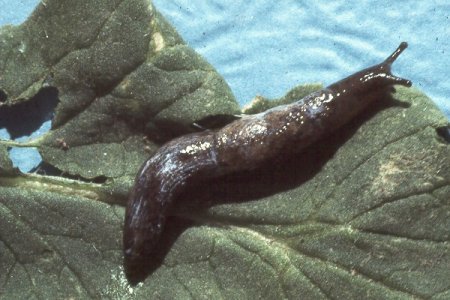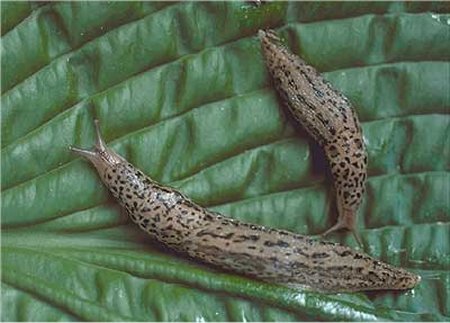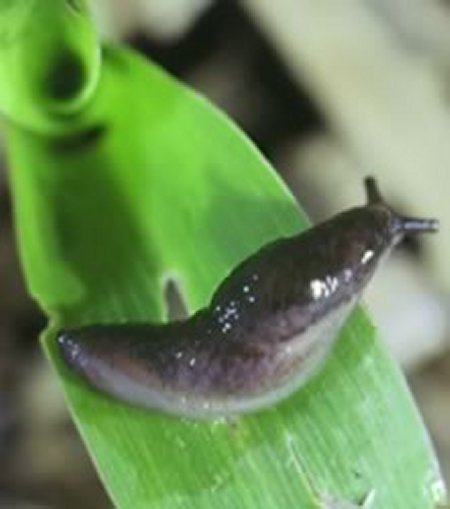
2005 Year in Review
Back to Page two: Other Listing | Back to Year in Review Index
Slugs: Controlling Garden Pests |
|
Source: Susan Grupp (630) 653-4114 Contact: Bob Sampson Extension Communications Specialist Phone (217) 244-0225; rsampson@uiuc.edu If you find large, ragged holes in the leaves of plants in your garden and notice a slime trail as well, a University of Illinois Extension horticulture educator warns you may have a slug or two taking up residence. "Slugs are one of the first pests of spring and hatch from jelly-like masses found under boards, flower pots, and other damp areas of the garden," said Susan Grupp. "Initially, they may feed on young, fragile plants, but over time, they will move to healthy plants, too. And they will feed--if not controlled--from spring to fall." Slugs are vulnerable to dehydration and avoid the sun and wind. They feed primarily at night, but they may also venture out during foggy or humid weather, or just after a rain. "There are many species of slugs, but the most common garden slug is 1-1/2 to-2 inches long when full grown and is gray to black in color," said Grupp. "Slugs are mollusks, not insects, and are closely related to oysters, clams, and snails. They secrete mucus that helps protect them from moisture loss and, as they move from plant to plant, will deposit a thick slime trail. These shiny, silvery trails can be seen on plants, sidewalks, and even the lawn, and are another indicator of slug activity." To help reduce slug populations, Grupp recommends removing any garden debris such as leaves, mulch, and other rotting or decaying vegetation. Stones or boards that can serve, as shelter for slugs should also be removed. "Prune up any branches that touch the ground so slugs cannot climb onto shrubs or trees," she said. "You may also want to increase the spacing between plants to help improve air circulation and reduce moisture and humidity." Sometimes, people try to lure slugs into homemade traps, with varying degrees of success. "Flat boards and overturned pots may attract slugs, but you must check these traps every day and remove the slugs, or you may simply be providing more hiding places for them," Grupp noted. "Another popular technique is to sink a shallow dish, filled with stale beer, in areas where you see slime trails. The hope is slugs will be attracted to the malt in the beer, and fall in and drown as they try to drink the beer. This does not always work. Slugs may simply drink a little beer and then move off to another spot in the garden." Some gardeners prefer to place a barrier around choice plants. Sharp sand, sprinkled around each plant, may work, but it must remain dry. If it gets wet from rain or watering, the slug will probably be able to make enough slime and move across the particles without much discomfort. "Copper stripping can be placed around each plant as a barrier. Again, varying degrees of success are reported with this method," said Grupp. Slug baits are available but must be used carefully, she said. Current chemical recommendations are available at local Extension offices. by Editor, theCity1.com |
|
Copyright © 2005 TheCity1.com.
All rights reserved
